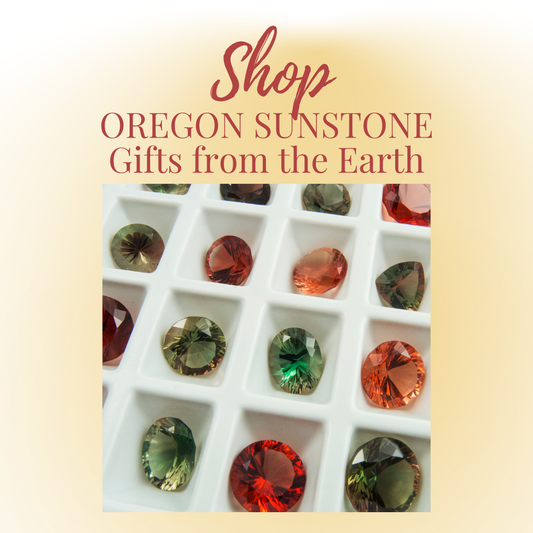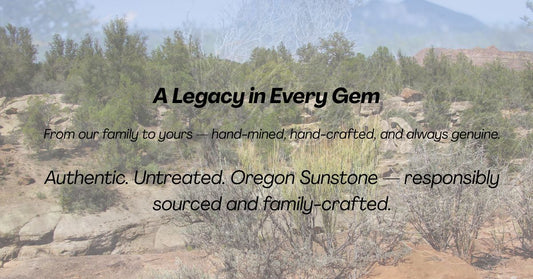Sunstone Mining in The Oregon Outback.
Within Oregon there is a small but unusual occurrence of semiprecious gems known as “Sunstone.” The locality is in the Rabbit Basin of southeastern Lake County, and the “Sunstone” occur as phenocrysts (large crystals) of gem-quality feldspar in a basaltic lava flow.

Oregon Sunstone is a unique labradorite sub-group of the abundant feldspar mineral. Feldspar can be found in several parts of the world in yellow and transparent colors. Among the feldspar family, only the Oregon Sunstone flaunts an impressive array of colors from champagne to peach, green to red and sometimes a combination of colors. What further distinguishes it from its international relatives, are the tiny copper platelets formed inside the stone which create a luminous metallic effect within the stone called “Schiller.” These copper mineral inclusions are usually arranged parallel to the direction of perfect cleavage in the feldspar crystal, so the glittering reflection is only seen when looking at the cleavage surface.

Here is a link to an article in the October 2017 issue of 1859 Oregon’s Magazine, the article was originally published on January 1, 2011. The information is a fascinating read about the beauty and mystery that still surrounds the Oregon Sunstone to this day.

The first collectors of Oregon Sunstones may have been the Native Americans that inhabited or traveled through Warner Valley. A group of small stones, some of which display “Schiller”, are displayed with the Native American artifacts in the Jacksonville Museum. These Sunstones, which are identical to the Warner Valley specimens, were found at Table Rock near Medford in Jackson County by an early resident. Some of the stones appear to have been flaked, and it is probable that the Native Americans from the Warner Valley traded them with the Rogue Valley tribes.

In 1970 a group of avid collectors discovered that in some places the Sunstone-bearing lavas were decomposed beneath the thin veneer of surface soil. They found that by disintegrating the parent material, larger, better-quality, and more colorful Sunstones could be recovered. This led to the staking of several mining claims in the area. Subsequently, at the request of organized gem and mineral groups, the Bureau of Land Management withdrew 4 square miles from mineral entry so that anyone desiring to look for and collect Sunstones could have access to a part of the area.
Today the BLM owns most of the thirty square miles that comprise the Sunstone area near Plush, OR. In Lake County, there are approximately 370 claims ranging from twenty to 160 acres that surround a 2,500-acre public collection area. According to BLM data, there were more than 10,000 visitors to the public collections area between 2009 and 2010, or double the number of people who visited in 2000.
Please read our article on Responsible Mining in Oregon.







